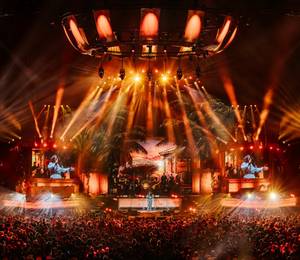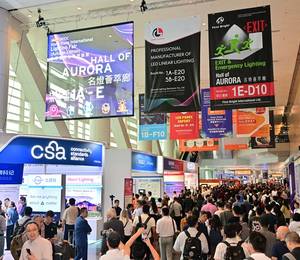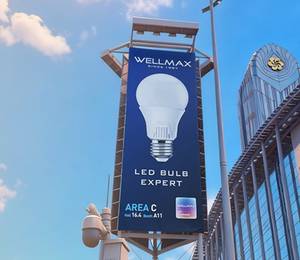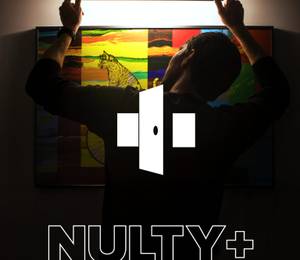Piscataway, NJ, USA – The DALI Alliance has extended its highly successful DALI-2 certification program to include control gear for self-contained emergency lighting. Focused on device interoperability, DALI-2 certification is built on open, international standards.
DALI emergency lighting is widely used as a robust and reliable solution that meets safety-critical requirements in buildings throughout the world. The DALI protocol enables integrated, digital control systems that combine illumination and emergency lighting. DALI-2 Emergency further extends interoperability of lighting-control devices and facilitates integration with building management systems, which can access DALI control and querying capabilities including automated testing and reporting.
“While the industry has enjoyed the benefits of DALI emergency lighting for many years, the introduction of DALI-2 Emergency is a huge step forward,” said Paul Drosihn. “For DALI-2, the level of testing has increased dramatically, and the results are independently verified. This means that the industry can have a great deal of confidence in the interoperability of certified DALI-2 devices.”
Emergency lighting, which provides light when the mains supply fails, is a critical feature that is mandated by various regulations. “Self-contained” means that the battery – which provides power during an emergency – is inside, or placed next to, the luminaire.
In many countries, there is a legal requirement for periodic testing of emergency lighting. DALI enables self-contained emergency tests to be automated, triggered by DALI commands or by an optional timer. Emergency control gear must implement both a function test and a duration test. The function test is a quick test of the battery, charging circuit, driver/relay and lamp, while the duration test ensures that the battery will be able to operate the lamp for the full rated duration (for example 1 hour or 3 hours).
DALI-2 Emergency certification requires the product to successfully pass a rigorous and comprehensive set of tests based on the international standard IEC 62386. The DALI Alliance independently verifies the test results, and then lists each certified product in its online product database (www.dali-alliance.org/products), providing public traceability. The first certified DALI-2 Emergency devices, which are entitled to use the DALI-2 logo, are expected very soon.
The DALI-2 Emergency tests developed by the DALI Alliance are based on Part 202 of IEC 62386. Control gear in Part 202 are also known as device type 1 (DT1). Devices implementing Part 202 can also optionally implement other features such as the luminaire, energy and diagnostics data in Parts 251-253. Also, the ongoing development of ‘DALI+ with Thread’ certification opens the possibility of future standardization for wireless control of DALI emergency lighting.
“As a manufacturer participating in its development, we have witnessed DALI becoming widely established as a robust and trusted basis for digital control of the complete lighting system environment,” said Richard Beesley, Chief Technology Officer of Mackwell. “With the introduction of DALI-2 certification for emergency devices, we are pleased that this brings updates to the protocol that remain perfectly aligned with the safety-critical requirements of emergency lighting.”
“The improved interoperability resulting from the inclusion of Part 202 in the DALI-2 certification program will help facilitate the advanced integration of emergency lighting in building management systems,” said Mustafa Oktay, Product Manager LED drivers at Signify. “This represents an important step forward by the DALI Alliance.”
“Tridonic has always placed great emphasis on the interoperability of lighting technology, and has therefore been an active member of the DALI Alliance from the very beginning,” said Thomas Ender, Vice President of Product Marketing at Tridonic. “Contributing know-how to the industry and helping to define new standards such as Part 202 for self-contained emergency control gear are important factors in promoting interoperability. These efforts are supported by developing and launching components which comply with these industry standards.”
“The update of Part 202 now brings emergency lighting in line with other DALI-2 devices, thereby ensuring emergency lighting follows a certification process that allows for interoperability between manufacturers and giving the assurance that control companies like zencontrol can access the full features of compliant emergency lighting,” said Stewart Langdown, Business Development Director of zencontrol. “As a company actively involved in the control and management of lighting, we feel this is a great step forward in the adoption of DALI-2 as the protocol of choice for ‘Smart Emergency’ and even smarter buildings.”
The DALI Alliance (also known as the Digital Illumination Interface Alliance or DiiA) is an open, global consortium of lighting companies that drives the growth of lighting-control solutions based on internationally standardized Digital Addressable Lighting Interface (DALI) technology. The organization operates the DALI-2 and D4i certification programs to boost levels of cross-vendor interoperability. As lighting continues to evolve and converge with the IoT, the DALI Alliance is also driving the standardization of wireless and IP-based connectivity solutions.











